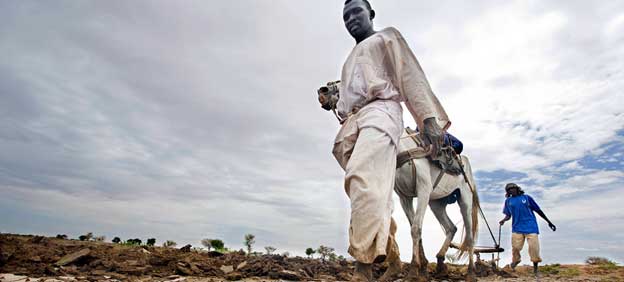COP26: Climate Action in Agribusiness Could Reduce Emissions by up to 7 per Cent

LONDON, Nov 11 (IPS) - Targeted action in agriculture could have a massive impact on climate change, according to a joint brief by the European Bank for Reconstruction and Development (EBRD) and the Investment Centre of the Food and Agriculture Organization of the United Nations (FAO), published at the COP26 climate conference in Glasgow scheduled to end November 12.
The mitigation potential of crop and livestock activities, including soil carbon sequestration and better land management, is estimated at 3 to 7 percent of total anthropogenic emissions by 2030.
The potential economic value of mitigating these emissions could amount between US$ 60 billion and US$ 360 billion, the two institutions say.
“Agriculture must become the focus of a global coalition for carbon neutrality and we need to support both mitigation and adaptation. We must enable smallholder farmers to adapt and to benefit economically through the provision of environmental services,” said Mohamed Manssouri, Director of the FAO Investment Centre.
“Now is the time to grasp this vital opportunity to reduce emissions and increase carbon sequestration, while restoring biodiversity, supporting health and nutrition and generating new business opportunities through food and land-use systems.”
The brief highlights the huge potential for engaging food and land-use systems in the fight against climate change. It also shows how the agriculture sector is uniquely placed to be part of the carbon-neutral solution by reducing emissions, while maximizing its potential to act as a carbon sink by absorbing more carbon from the atmosphere than it releases. A full report will be published in early 2022.
The agriculture sector generates a high amount of greenhouse gas (GHG) emissions, with agri-food systems causing an estimated 21 to 37 percent of total global emissions. But agriculture is also a victim of emissions.
Farmers are often among the first witnesses to climate change. Rising temperatures, changing rainfall patterns and supply-chain disruptions are already impacting food production, undermining global efforts to end hunger.
The EBRD/FAO brief shows how sustainable, targeted investments and interventions will make agriculture part of the climate solution. Reaching carbon neutrality for agri-food systems essentially means lowering GHG emissions throughout the entire value chain, improving farming practices, using agricultural lands for carbon sequestration, promoting sustainable agriculture and avoiding land clearance.
The brief sets out key action areas for policymakers and investors, including the development and enhancement of sound governance mechanisms and the mainstreaming of carbon neutrality in corporate strategies.
Achieving the right policy mix and agreeing on carbon accounting methods can unlock major investments in greening across agri-food systems.
“The investment universe is evolving quickly, as banks align their lending with the net zero objective and asset managers look for opportunities to decarbonise their portfolios while managing risks associated with climate change,” said Natalya Zhukova, EBRD Director, Head of Agribusiness.
One of the main actors in addressing climate change is the private sector. Country policies, strategies and roadmaps are all important in signalling regulatory changes and creating incentives to drive the accurate valuation and pricing of carbon.
While the private sector will be needed to mobilise billions, equally, it stands to gain by reducing costs, mitigating risks, protecting brand values, ensuring long-term supply-chain viability and gaining competitive advantage.
Nibal Zgheib is Communication Adviser, EBRD and former Programme Assistant, World Food Programme
Follow @IPSNewsUNBureau
Follow IPS News UN Bureau on Instagram
© Inter Press Service (2021) — All Rights ReservedOriginal source: Inter Press Service
 Global Issues
Global Issues